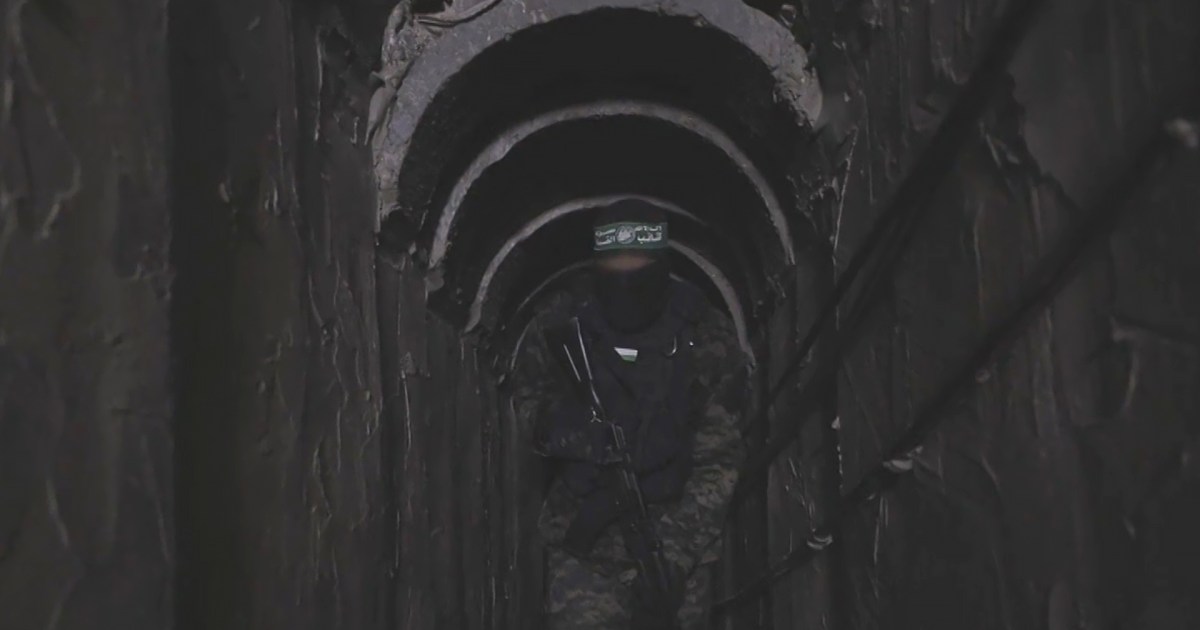Over the course of 11 days, and for long hours, Israeli missiles bombed Gaza during the last war on the Strip, destroying homes, streets and residential towers;
On the pretext that Israel is seeking to eliminate what it called "Hamas metro" in the Strip, dozens of people were martyred and hundreds of others were injured, most of them civilians.
For the first time since the end of the war, the Izz al-Din al-Qassam Brigades (the military wing of the Islamic Resistance Movement Hamas) allowed the island to roam large areas of its tunnels, and see part of the damage caused by the Israeli bombing.
Moussa (one of the Qassam Brigades fighters) accompanied us on a tour that included various tunnels, long and extended corridors, branches, crossings, weapons depots, and rocket launch pads, which Al-Qassam says are part of the underground combat and operational tunnels system.
Limited damage despite intense bombing
The al-Qassam fighter acknowledges the existence of limited damage, stressing that a large part of it was restored immediately after the end of the war.
He pointed out that the Al-Qassam Brigades has a mechanism to isolate and remove the parts and places that are damaged by the Israeli bombing.
Moussa says, "During the last battle, the Israeli occupation army tried with all its combat capabilities and bombarded with dozens of bombs - especially laser-guided, artillery and drone bombardment - to reach us and target us, but we were carrying out our combat missions through this extended network of tunnels to the fullest." ".
He added, "The occupation army relied in its attacks on connectivity and imagination, not on information, as it was bombing large areas - including homes and civilians - in the expectation that it might reach us, but it was disappointed and lost. The resistance, its men and its capabilities are still doing well."
The fighter in the Al-Qassam Brigades cites the validity of his statement that the Israeli occupation was unable to affect the level of the resistance's fire momentum from the first day to the last day of the battle.
Equipped rooms and maps to manage battles
During the tour, which lasted for several hours, Al-Jazeera correspondent saw for the first time after the war rooms equipped with communication equipment and maps, which Al-Qassam says were used to manage battles and operations targeting the Israeli occupation.
Jihad (one of the fighters who participated in a number of operations against the Israeli army) says that this room is one of the command and control rooms that were used in the war, and it is still used after the end of the war, and explains that it is equipped with all the equipment and tools necessary to lead operations and manage the forces.
The al-Qassam fighter asserts that the tunnel network had an important role in providing basic principles of fighting, the most important of which is security and flexibility to maneuver, which gave the resistance an appropriate level of superiority during the last battle and previous battles, despite all the armored brigades, combat formations and weapons owned by the Israeli occupation. Atmosphere, international support and cover.
According to Jihad, the tunnels gave several advantages to the Palestinian resistance, through which they were able to capture Israeli soldiers during the 2014 war, in addition to infiltration operations behind enemy lines, and the maintenance of missile systems throughout the days of battle.

